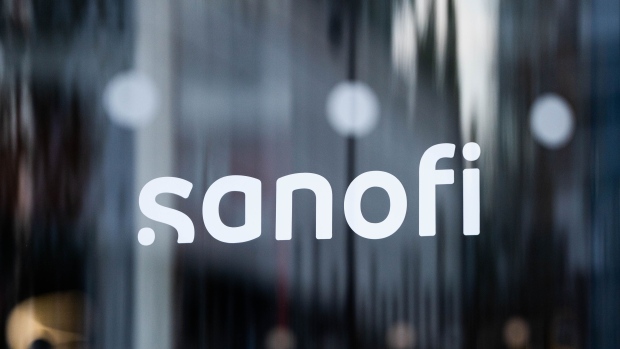Dec 6, 2023
Sanofi Says Pharma Sales Set to Reach €10 Billion by 2030
, Bloomberg News

(Bloomberg) -- Sanofi laid out ambitious plans to bolster its pipeline of new medicines as the French drugmaker tries to reassure investors after the plan triggered a profit warning and a sell off that wiped out about $25 billion in market value.
Chief Executive Officer Paul Hudson, lauding Sanofi’s “new drumbeat,” forecast more than €10 billion ($11 billion) in annual sales from recent launches and future medicines by 2030 — almost twice the current expected level, according to Jefferies analysts.
Hudson and his new head of research and development, former entrepreneur Houman Ashrafian, described their vision to create an immunology powerhouse amid concern about spending, but the stock fell as much as 3.3% in Paris trading.
“They need to convince the market that the pipeline is interesting enough to justify the big disappointment they put on investors,” said Markus Manns, a portfolio manager at Union Investment in Frankfurt.
Sanofi in late October unexpectedly forecast lower profit for next year and scrapped a 2025 target. The shares haven’t recovered much from their 19% plunge on Oct. 27.
The company will raise spending on drug development by as much as €1 billion annually in coming years, according to Hudson. The idea is to bring forward several potential blockbusters at once, but the extra spending will likely cause earnings to decline next year.
“We’re not splashing the cash,” Ashrafian said. “My belt remains tight.” He praised Sanofi’s experimental medicines, highlighting “very impressive” data from Sarclisa in cancer and revealing that the hemophilia drug fitusiran has achieved breakthrough designation from the US Food and Drug Administration.
“Sanofi’s investment thesis is now an R&D ‘show-me story,’” Morgan Stanley analysts wrote in a note.
Hudson faces rising pressure as he tries to turn Sanofi into a pharma company focused solely on innovative prescription medicines, emulating rivals like Novartis AG. That involves selling off some older drugs and separating the consumer-health division. Some analysts say the company should form alliances with other drugmakers to share both costs and risk.
Read More: Sanofi CEO Shocks Investors With R&D Spending, Few Details
Instead, Sanofi is opting to go it alone. “I’ve been waiting for this sort of moment since I joined in 2019,” Hudson said on a call with reporters.
The company’s plans to raise spending on research and development will lead to a 50% increase in the number of late-stage clinical trials in 2024 and 2025.
Part of the October shock came from the fact that Hudson, a perennially upbeat CEO, seemed to have little need to roll the dice. The British-born executive was sitting pretty as the shares had marked a double-digit gain for the year and the company had a world-beating asthma and skin drug in Dupixent and few of the patent-cliff worries weighing on some of his big pharma rivals.
Sanofi argues that its strategy shift is a sign of strength. New products include Altuviiio for hemophilia and Tzield for type-1 diabetes. Among the company’s more promising experimental medicines are amlitelimab for treating atopic dermatitis, a chronic skin condition, and frexalimab to target, among other things, multiple sclerosis.
--With assistance from Lisa Pham.
©2023 Bloomberg L.P.


